You may be familiar with common domestic cat breeds like the Siamese, Persian, or Maine Coon. But there are also exotic cat breeds that offer wild and unique looks without the high maintenance of a big cat like a lion or tiger.
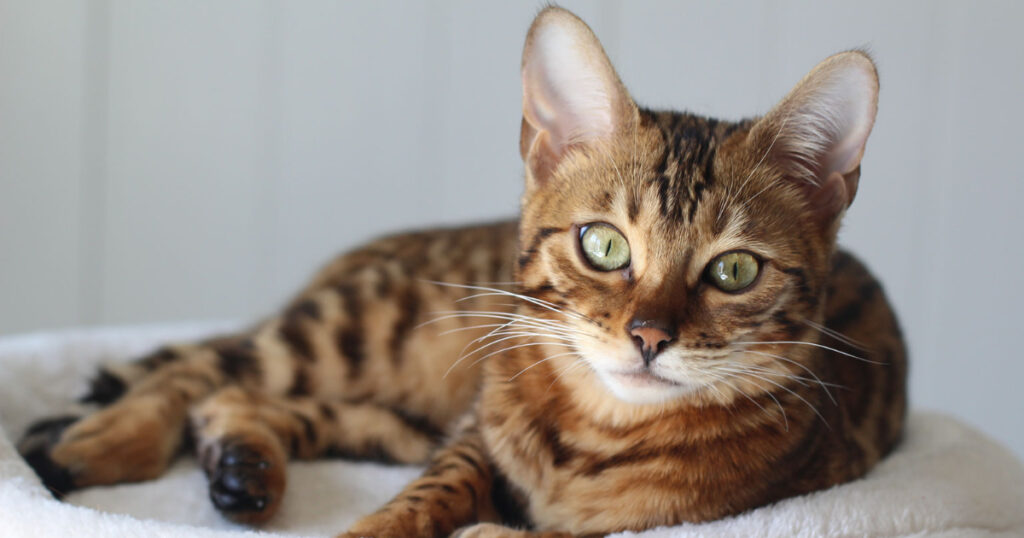
Exotic simply refers to any cat breed that has an unusual or striking appearance compared to an average domestic shorthair cat.
Exotic cats can make wonderful pets for the right owners who can meet their needs. Read on to learn more about some of the most popular exotic cat breeds and what makes them so special.
The Bengal – A “Leopard” in Your Home
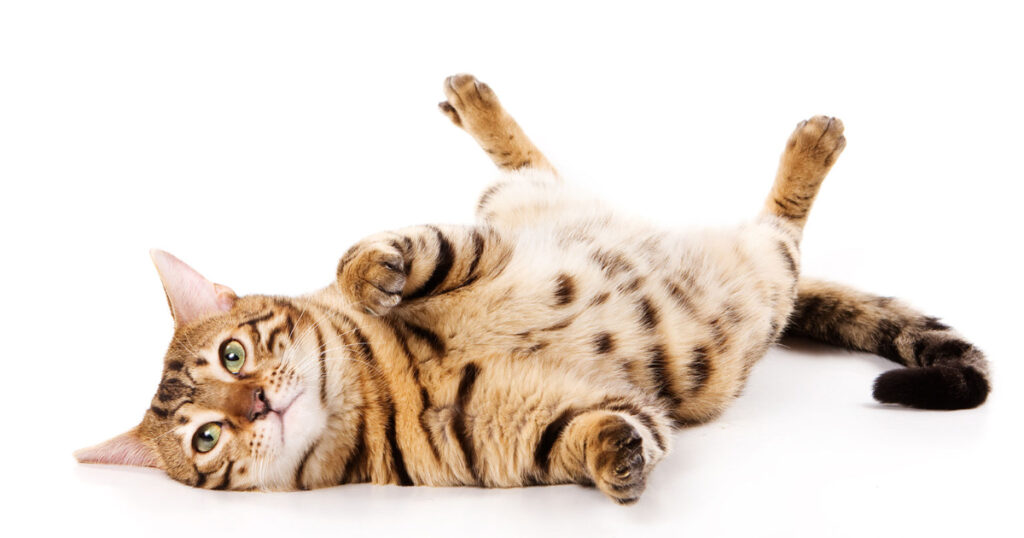
With its vividly spotted or marbled coat, the Bengal resembles a miniature leopard or jaguar. But it has no recent wild parentage, having been bred from domestic cats crossed with Asian Leopards several generations ago. The breed was developed by Jean Mill in the 1970s and became TICA-registered in 1983.
Today, the Bengal is one of the most popular exotic cat breeds. At first glance, you may mistake it for a wild cat. But the Bengal has a domestic temperament, forming strong bonds with its family. They are highly intelligent, energetic, and curious and demand a lot of play and interaction. A Bengal cat needs plenty of opportunities to climb, run and fulfill its predator instincts with interactive toys. With proper care and training, a Bengal can learn tricks and walk on a leash.
Bengal cats come in four recognized coat patterns. The marbled Bengal features intricate swirled markings, while the spotted Bengal has more leopard-like rosette spots. There are also ticked tabbies and solid-colored coats, though these are less common. Whatever coat pattern you prefer, a Bengal will captivate you with its wild beauty.
The Savannah – A Serval Hybrid
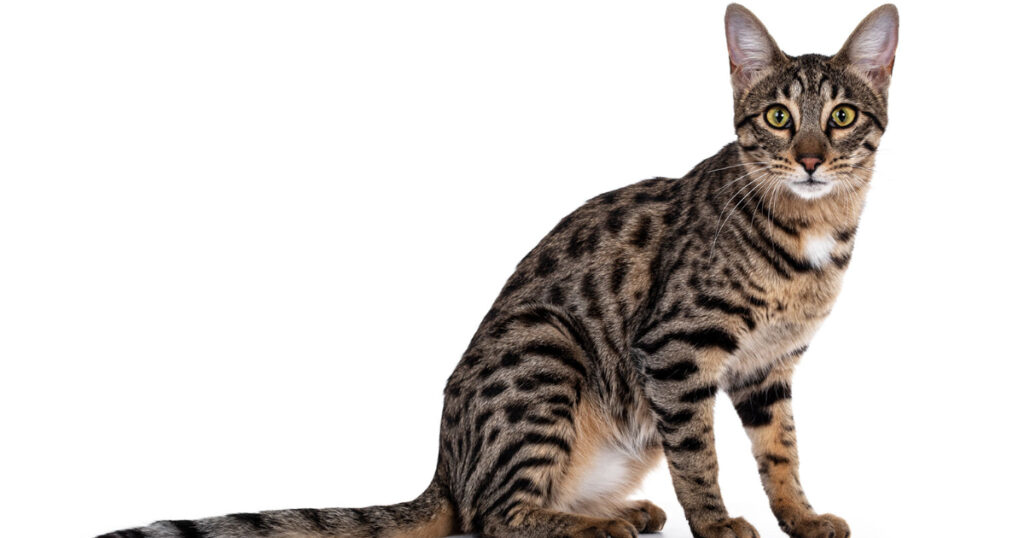
Tall and elegant with its spotted coat and oversized ears, the Savannah resembles the African Serval but in a domestic package. Savannahs were first bred in the 1980s by crossing a Serval with a domestic cat. After years of careful breeding, TICA accepted them as a new registered breed in 2001.
Savannahs are active, intelligent, and confident cats that form strong bonds with their owners. They often exhibit dog-like qualities, such as playing fetch. Early generations tend to be more challenging pets that are not recommended for first-time cat owners. But Savannahs get calmer and more sociable with each domestic breeding.
Kittens with more Serval genes are larger and more exotic looking. But they retain more wild behaviors. Later generations produce smaller cats that are easier to handle. Savannahs come in spotted, rosetted and marbled patterns in various shades of brown. Their wild essence combined with loving devotion has made them a coveted exotic breed.
The Chausie – Wild Look, Domestic Heart
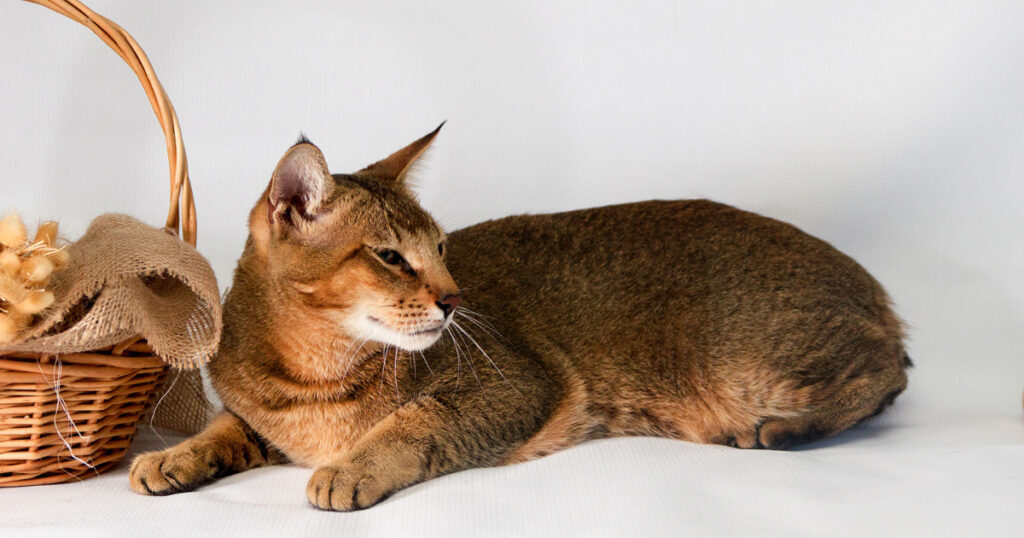
With its graceful curves and long legs, the Chausie resembles a miniature cougar. But they have fully domestic temperaments thanks to Jungle Cat hybridization several generations behind them. Chausies are outgoing, intelligent, and affectionate cats that enjoy human interaction. They form strong bonds with their families.
The Chausie is a high-energy breed that needs a lot of play and exercise. They are too wild for households with small children or other pets. With proper care and training, Chausies happily adapt to leash walks and car rides. Their muscular bodies are capable of great athletic feats like vaulting to the top of refrigerators.
While some Chausie breeders offer purebreds, most are fourth-generation or later hybrids. Legal restrictions apply in some areas regarding ownership of first through third-generation cats. Be sure to research state and local laws before getting a Chausie.
The Ocicat – Wild Look But 100% Domestic

Resembling an Ocelot with its golden spotted coat, the Ocicat enjoys attention for its exotic appearance. But it actually has no wild feline lineage. Ocicats were created by accident from Siamese and Abyssinian breeding. Their name pays tribute to their resemblance to wild jungle cats, but they behave just like domestic house cats.
Ocicats are highly sociable, playful, athletic, and family-oriented. Their dog-like qualities mean they will eagerly greet you at the door, play fetch and walk on a leash. Ocicats bond closely with their families while still retaining an independent streak. Their wild appearance, combined with their domestic temperament, makes them an ideal exotic pet for many.
The Egyptian Mau – The Oldest Spotted Breed
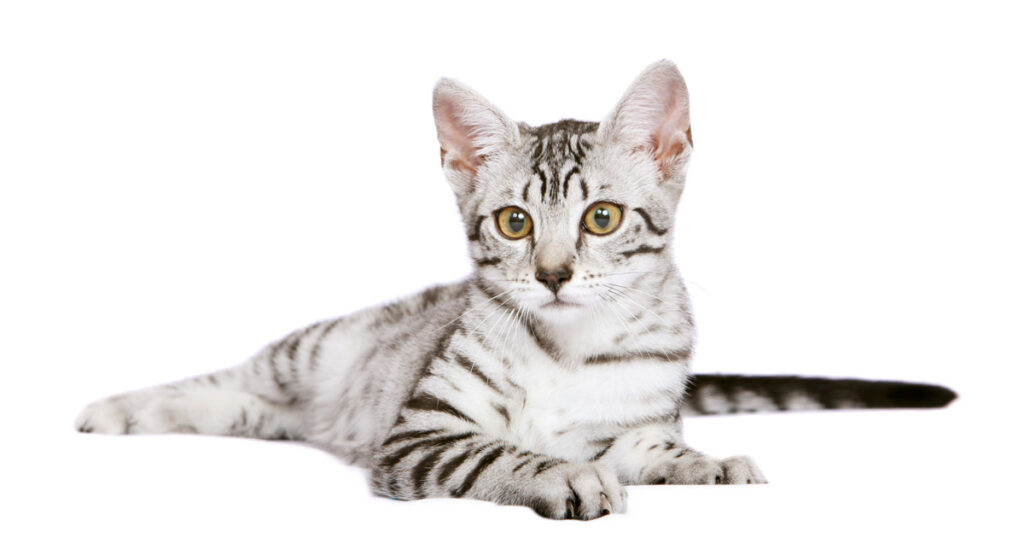
With its striking spotted fur and wild appearance, you may assume the Egyptian Mau has jungle cat heritage like the Bengal and Savannah. But the Mau is a fully domestic cat breed believed to have natural connections to Ancient Egypt. They are the only naturally occurring domestic spotted breed. Some historians believe the Egyptian Mau is the predecessor to the modern domestic cat.
Beyond their leopard-like looks, Egyptian Maus have outgoing personalities but tend to bond most strongly with one special person. They also have a strong prey drive and may not mix well with pet rodents and birds. One of their most prized traits is running speed – Egyptian Maus can hit 30 mph, making them the fastest domestic cat breed! Their exotic elegance and speed have earned them the nickname “the greyhound of cats.”
The Toyger – Domestic Tiger Lookalike
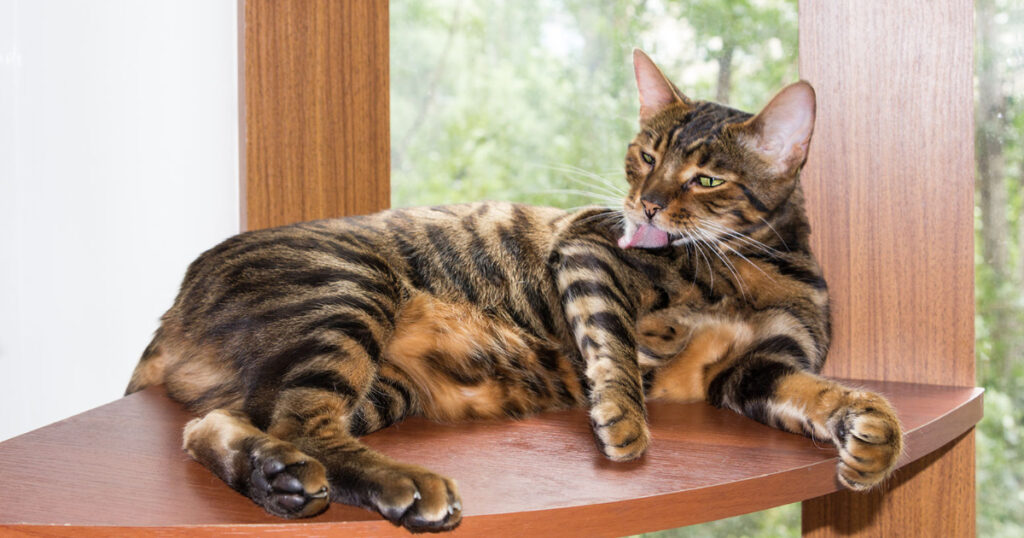
With its vivid striped coat resembling a miniature tiger, the Toyger immediately conjures images of the ferocious big cat. But despite its fierce appearance, the Toyger has no wild feline genes. It was created from striped domestic shorthairs and Bengals to resemble a toy-sized tiger. Breeder Judy Sudgen first developed them in the 1980s to promote tiger conservation.
Though it looks wild, the Toyger has a friendly, mellow temperament perfect for families. They also get along well with other pets if properly introduced. Clever and energetic, Toygers enjoy playing fetch and learning tricks. Their stunning tiger-like stripes combined with an easygoing personality make them a unique exotic breed to consider.
The Kurilian Bobtail – Wild Lynx Lookalike

With its bobbed tail and tufted ears, the Kurilian Bobtail resembles a lynx or bobcat. But it is a naturally occurring landrace breed originating from the Kuril Islands of Russia. They likely reached the islands aboard seafaring ships. The Kurilian Bobtail is recognized for its pom-pom bobtail that is less than 8 cm long. They come in long- and shorthair varieties with colors ranging from solid black to tortoiseshell.
Despite their wild cat looks, Kurilian Bobtails have sweet, gentle temperaments. They enjoy lounging around and napping but also appreciate playtime and interacting with their families. If you want a cat that looks exotic but has a laid-back personality, the Kurilian Bobtail may be your match. Their cute stubby tails give them an adorably wild essence.
The Pixiebob – The Legendary “Bobcat” Breed

Many myths and legends surround the origins of the Pixiebob, with some speculating it descended from naturally occurring bobcat hybrids. However, DNA tests have proven it is a fully domestic cat. The breed originated from domestic cats with the wild bobcat-like traits of a short tail and polydactyl paws. The goal was to replicate the appearance of the North American Bobcat.
Despite urban legends of bobcat ancestry, the Pixiebob has a loving temperament. They enjoy being lap cats but also need ample playtime to satisfy their high energy. Pixiebobs come in shorthair and longhair varieties in patterns like tabby, tortoiseshell, and solid. If you love the look of bobcats but not the wild temperament, a Pixiebob can be a perfect exotic pet.
The Serengeti – Stunning Bengal and Oriental Shorthair Mix
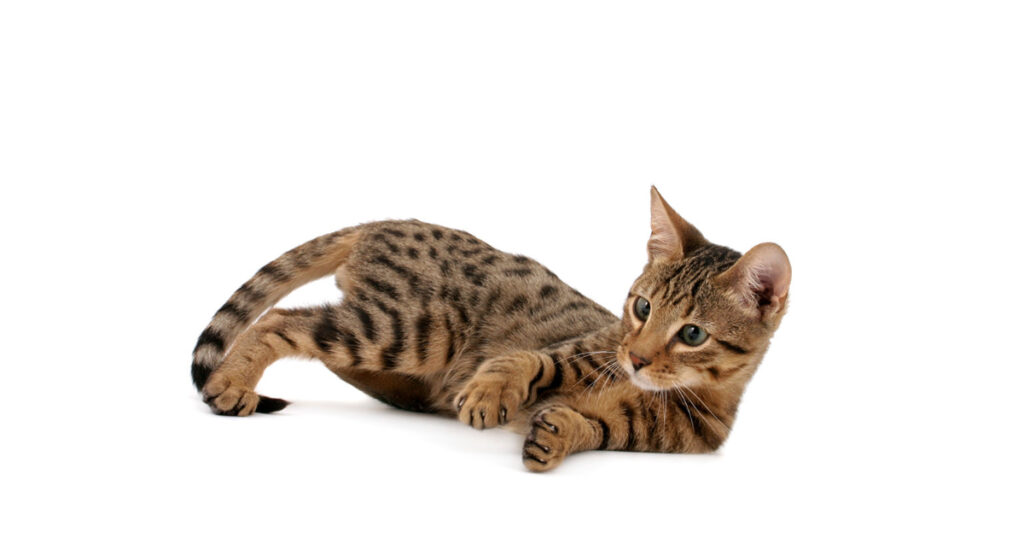
With its vivid spotted and striped coat and large upright ears, the Serengeti resembles a wild African Serval. But it was actually developed much more recently by crossing Bengals with Oriental Shorthairs. The goal was to produce cats that looked exotic without actual wild parentage. The striking Serengeti combines the Bengal’s vivid coat with the Siamese personality of the Oriental Shorthair.
These long-legged, medium-sized cats are confident, friendly, and vocal. Serengetis bond deeply with their families but may be shy around strangers. Extremely agile, they can leap vertically over 7 feet! Early socialization is important for a well-rounded Serengeti cat. Their high energy also demands regular play and exercise. For an exotic yet domestic-natured pet, the Serengeti can be ideal.
Exotic Shorthair – The “Persian” of Exotic Breeds
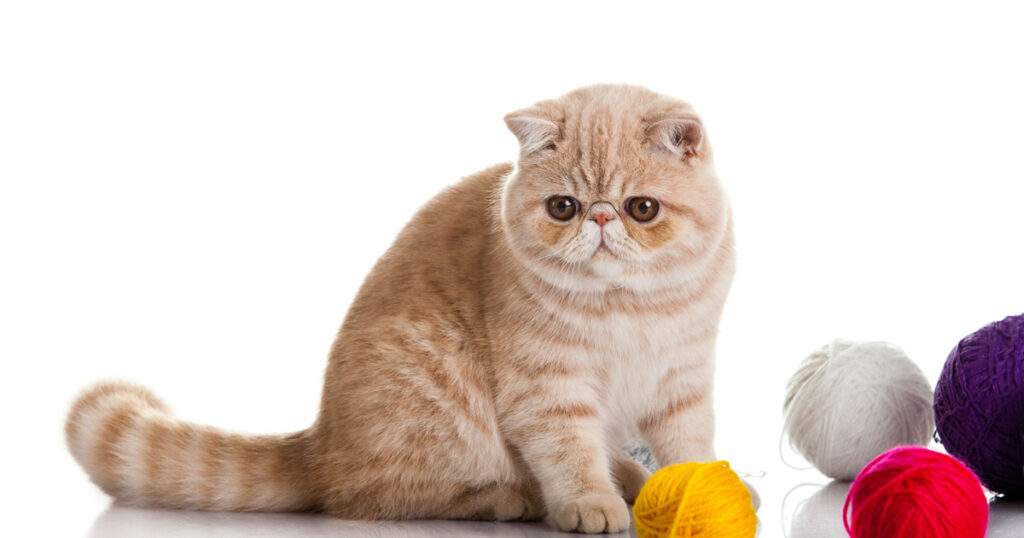
With its pushed-in Peke face, a stocky body, and short legs, the Exotic Shorthair resembles a Persian with a short plush coat. It was originally called the Shorthaired Persian and came from breeding Persians to American and British Shorthairs. This gives the Exotic Shorthair a pleasant, easygoing personality that adapts readily to any home.
The Exotic Shorthair breed standard accepts all Persian coat colors and patterns like solid, tabby, silver, and smoke. Their colors can be vivid and vibrant, giving them an exotic appearance compared to traditional domestic shorthairs. The Exotic Shorthair has the calm, gentle temperament of the Persian but with lower grooming needs, making it an ideal exotic family pet.
Special Considerations for Owning Exotic Cats
While the exotic cat breeds we’ve covered can make wonderful pets, they have some special considerations compared to traditional domestic shorthairs.
Here are a few things to keep in mind:
- Exotic cats are often more active and demanding of play, exercise, and interaction. Make sure you can devote abundant time to engaging with your exotic cat daily. Interactive play is a must to prevent boredom and destructive behaviors.
- Many exotic breeds need more grooming. Longhaired exotic varieties like Persians and Ragdolls require daily brushing to prevent mats. Even shorthairs like Bengals and Savannahs need weekly grooming to keep their vivid coats healthy.
- Exotic kittens have higher purchase prices, starting around $1000 and up to even $25,000 for very rare first-generation hybrids. Shelter adoption is rarely an option for exotic cat breeds.
- Exotic cats are illegal in some areas, including first through third-generation hybrids like the Bengal and Savannah. Always research state and local exotic pet laws before getting any exotic breed.
- Exotic cats need specialized veterinary care. Make sure your local vets have experience with unique breeds before getting an exotic cat.
The right exotic cat can make an outstanding pet for owners willing to meet their unique needs. For pure beauty and an added sense of wildness, exotic cats capture our hearts like no traditional breed can.
Frequently Asked Questions
What are some energetic exotic cat breeds?
Some of the most energetic exotic breeds include the Bengal, Savannah, Chausie, and Toyger. These exotic cats are highly intelligent and need ample exercise and playtime to thrive. Interactive toys and daily play sessions are a must for these energetic, exotic breeds.
Which exotic breed is the largest?
The Savannah is one of the largest exotic cat breeds, with males potentially reaching 25 pounds or more. Early generation Savannahs have the most Serval genes and hence are the largest, with later generations being smaller.
Do exotic cats have any health problems?
Some exotic hybrid breeds like Bengals and Savannahs are predisposed to certain inherited health conditions. Careful screening of breeder stock can help minimize these issues. Some exotic shorthairs like the Minskin/Napoleon may suffer joint problems due to their Munchkin genetics.
What’s the rarest exotic breed?
Early generation F1 and F2 Savannahs are likely the rarest exotic cats available. These direct hybrids of Servals have the most concentrated wild genes and can cost $15,000 – $25,000. Their challenging temperaments also make them pets only suitable for very experienced owners.
Do exotic cats need any special care?
Yes, exotic cats tend to be more active and demanding attention, playtime, and grooming than traditional shorthairs. They also have higher purchase prices and may be illegal in some areas. Exotic kittens also need specialized veterinary care from vets experienced with unique breeds.
Conclusion
From the majestic charm of the Bengal to the dog-like loyalty of the Savannah, exotic cat breeds give you stunning beauty and endless affection. While they take more effort than traditional cats, exotics like the Egyptian Mau and Ocicat reward your dedication generously.
Just be sure you’re allowed to own the breeds you’re interested in and can provide the exercise, grooming, and veterinary care these special kitties need. Then get ready for a wildly rewarding relationship with one of these exotic beauties!








